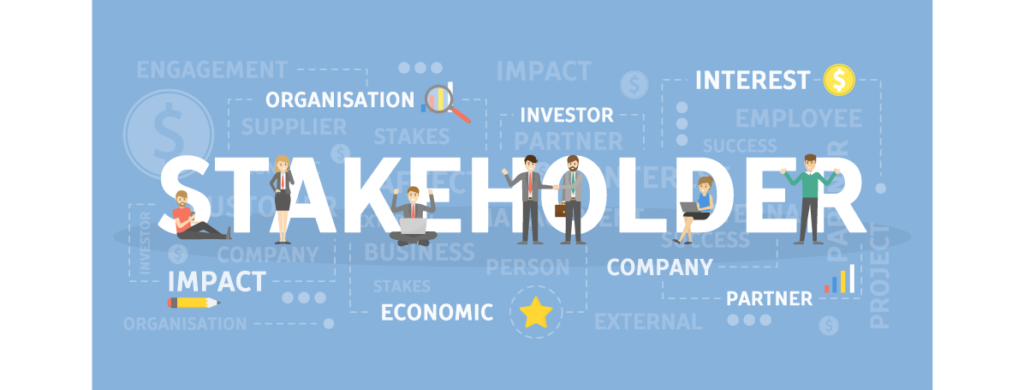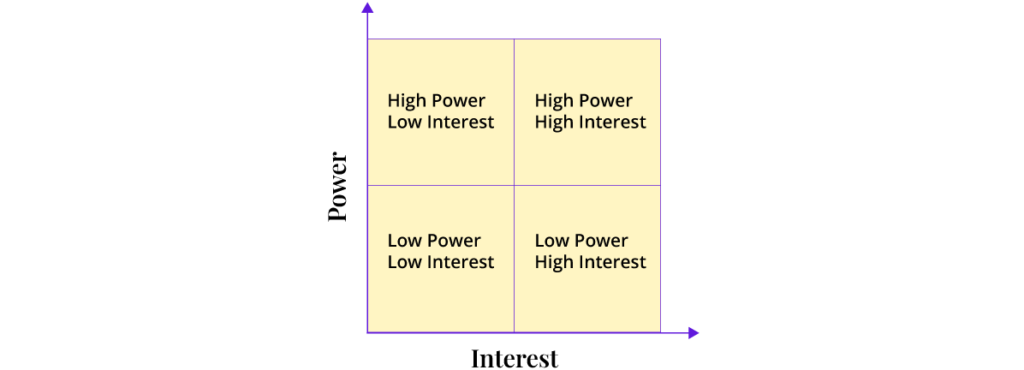How Does the Product Owner Manage Various Stakeholders?

Originally published at Knowledgehut website
As you know, Scrum has the 3 most important roles, which are Product Owner, Scrum Master, and the Team. Apart from these core roles, we have involved stakeholders. It is very important to manage various stakeholders to let the project go in the right direction.
Now, when it comes to the Product Owner, one of the most important roles and responsibilities is to manage stakeholders. Managing their requirements, their areas of interests, areas of conflicts, and a lot more.
This article is going to talk about the Product Owner roles and responsibilities. Furthermore, It gives you insights about who all are the stakeholders, what does it mean to manage the stakeholders, what should be the process, and the further best tips to manage stakeholders. Let’s get started with understanding the basics first.
Stakeholder Management
A stakeholder is anyone interested in the product or we can say who is influenced by the product or involved in the product.
This can be anyone who has a certain type of interest in the project, be it financial interest, someone who has invested, or it can be someone who is going to use the product, which could be customers. We will understand the various types of stakeholders in the coming section of this article.
Now, coming to stakeholder management. Stakeholder Management plays a vital role in project success. It is basically about maintaining good relationships with the stakeholders, or we can say manage them to make them respond positively towards the project. We will understand various ways to implement this in the coming sections of the article.
Let us first understand the roles and responsibilities of a Product Owner before we dive deep into managing stakeholders.

Product Owner Role and Responsibilities
The product owner is the most important person, who “owns” the product. This person is responsible for the Product Vision.
1. A key decision-maker and responsible for the ROI of the business
2. Responsible for understanding the end customers and creating the product backlog requirements accordingly
3. Responsible for product backlog management (Prioritizing and Managing it)
4. Responsible for reviewing and checking the potentially shippable product increment deliverable at the end of the sprint
5. Providing feedback to the team at the regular intervals to make sure the product development is moving in the right direction
6. Refining the product backlog, based on the feedback and changing market needs.
7. And not to forget, managing stakeholders!
Now that we understand the Product Owner deeply and it’s responsibilities, let us understand the Stakeholders.
Understanding the Various Stakeholders

A famous “Chicken” and “Pig” story in Scrum is one of the very good examples that explain how “Chicken” represents the stakeholders who are merely “involved” and “Pig” represents roles like Product Owner, Scrum Master, and the team, which are not only involved but “committed”. Someone who is not part of the team but still has an interest and involvement in product or project development and it’s progress. However, someone who would be affected by the project or product development.
This can include:
- Directors, Decision Makers at the organization
- End Users/End Customers
- Product Sponsors
- Marketing team
- Legal entities
- Etc.
It is very important to take care of these Stakeholders and fulfill all their requirements during and after product development. Now, when we see Stakeholders, this will contain different sets of people and with different roles.
This can include some really good stakeholders who would always encourage the team and provide constructive feedback. However, on the other hand, this can include some challenging stakeholders, who don’t support or provide any feedback.
This is where comes the need for management of stakeholders. However, if we go with the management, it’s like managing people, because stakeholders would include people with different roles.
However, we will look at the larger picture here and see how to manage stakeholders. Let’s have a look at it by putting our feet into the Product Owner’s shoes.
Reviewing Stakeholder Management Process
As we got an idea that Stakeholder could be someone who would either support or someone who would either oppose. The process of managing these stakeholders is Stakeholder Management Process. It involves managing their expectations, communication, requirements, etc.
It involves 4 different steps which will talk about:
- Identifying the Stakeholders

The very first step that comes in the Stakeholder management process is “Identifying the Stakeholders”. This can be anyone who is involved in the project or is affected by the project. Let us have a look at different aspects for identifying the stakeholders:
- Someone who has an impact on the project
- Someone who has an opinion or a point of view on the project
- Someone who has a decision making power
- Someone who would like to see your project successful
- Someone who would like to see your project fail
- Someone who has an impact over your team
- Someone who can help resolve conflicts or remove challenges
- Someone who simply have an interest in the project
Once, we list down and identify the stakeholders, it is easy for us to categorize them based on different aspects. This whole process is identifying the stakeholders. Once we know them, it is easy for us to manage them.
2. Analyzing the Stakeholders

There are several ways to analyze stakeholders. We will have a look at the two most important ones. The first one is Power-Interest Graph.
Power-Interest Graph

-
High Power, High Interest
These stakeholders are mostly the decision-makers or the key-players. They can impact in a way that can make the project successful or fail. They are very easy to identify. Now, when it comes to communication, they should be actively engaged! These stakeholders are highly powerful, so we must try to meet their each and every requirement, otherwise they can even cancel our project if not satisfied.
-
High Power, Low Interest
These stakeholders again have decision-making abilities but they are not so much interested. A lot of communication can make them disinterested in the project or product. They lack interest and therefore, they should be kept satisfied!
Do whatever it takes to keep them satisfied.
-
Low Power, High Interest
These stakeholders are the ones who have less power over the project but they are keenly interested in what’s going on. They might impact the project, so it is important to keep them informed!
-
Low Power, Low Interest
These stakeholders are the ones who are merely present and don’t expect to be involved much. They might not be interested and might not be expecting any sort of communication. It is important, you just monitor them!
Now that we saw the Power-Interest Graph, another interesting way is the Stakeholder SWOT Analysis. Let us have a look at that one as well.
Stakeholder SWOT Analysis.
Another way is to analyze the stakeholders based on their Strengths, Weaknesses, Opportunities, and Threats. What will be their Strengths and Weaknesses? What will be the opportunities and threats they would bring to the project? This will help analyze them better.

3. Prioritizing the Stakeholders
For a product owner, prioritization is like an ongoing activity. Just like they need to prioritize the backlog, a similar way, they need to prioritize the stakeholders. After the successful identification and analysis, once they are prioritized, they can be taken care of accordingly. This way, product owners can develop the communication plan and can further deliver the right message to the right stakeholder at the right time.
4. Engaging the Stakeholders
This is the last step where execution takes place. Now that we have identified, analyzed, and prioritized the stakeholders, this is where we will implement the communication plan. Determine different action plans, whether are going to have one on one conversations, meetings, or going to communicate through emails. We define and execute our plan accordingly and keep the stakeholders engaged as required. Thus, managing all their expectations.
5 tips for the Product Owners to manage stakeholders effectively
By now, we know how to identify the stakeholders, analyse them, and different steps of the management process. Let’s have a look at some of the best practices which Product owners can follow to manage stakeholders effectively:
- Don’t treat Stakeholders same.As we have seen the matrix above on identifying, analyzing and prioritizing the stakeholders. It is very important for the Product Owners to treat them accordingly. Based on our analysis, we categorize them and then based on our categorization, Product Owners need to treat them.
- Act like an Owner. Being a Product Owner is a great responsibility. It is the person responsible for the ROI of the business. With responsibility comes the authority. It is very important you act like an “Owner”. This not only gives you the power over stakeholders but also helps manage them more effectively.
- Communicate Upfront.Never hesitate to say “No” to the stakeholders. Being a product owner, you know what is good for the project and what is bad for the project in order to make it successful. As and when needed, for certain decisions and for the benefit of the project, feel free to say “No” to the stakeholders and be upfront in doing so.
- Set Expectations.It is very important that being a Product Owner, you set all the expectations with the stakeholders. Understanding what they need to know and what they are expecting out of the project. Further, You should be communicating with them in terms of their expectations only.
- Involve Scrum Masters. We know that Product Owner is responsible for managing the stakeholders, but this is not mandatory that Product Owner should do it all alone. Have your Scrum Master besides you to support you with all sorts of process questions, which can eventually help you manage the stakeholders more effectively.
These were some of the best tips to manage stakeholders effectively and efficiently.
To conclude, we discussed several types of stakeholders and we looked at the process of managing them. The major takeaway from this article is understanding the stakeholders. For understanding and managing them, Remember the 4 key points, which are Identifying, Analyzing, Prioritizing, and Engaging the stakeholders. For engaging with the stakeholders, which involves the execution, we have provided you with 5 tips for the product owners to manage stakeholders effectively. Stay tuned for more such articles!